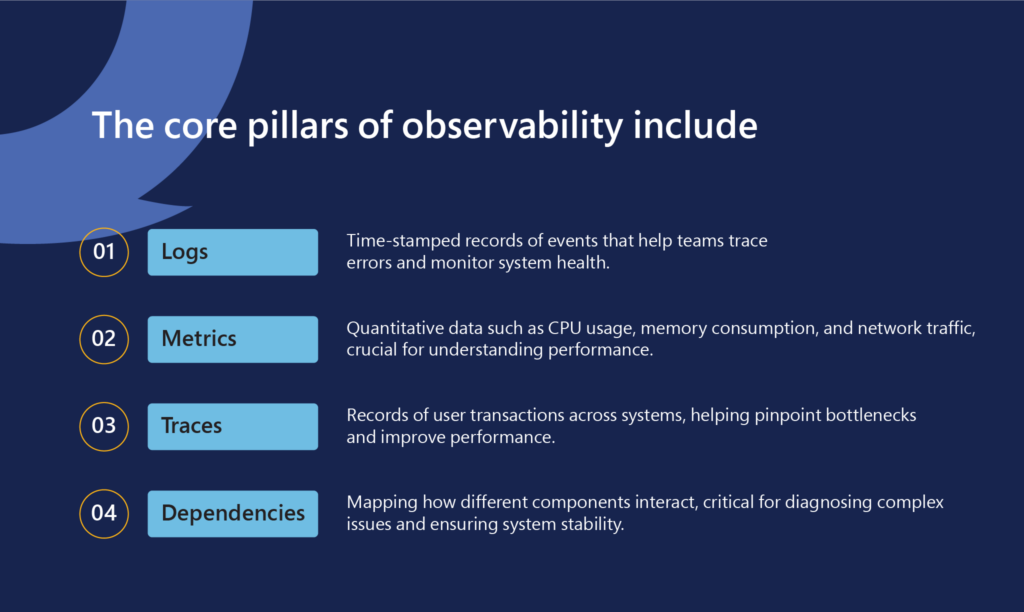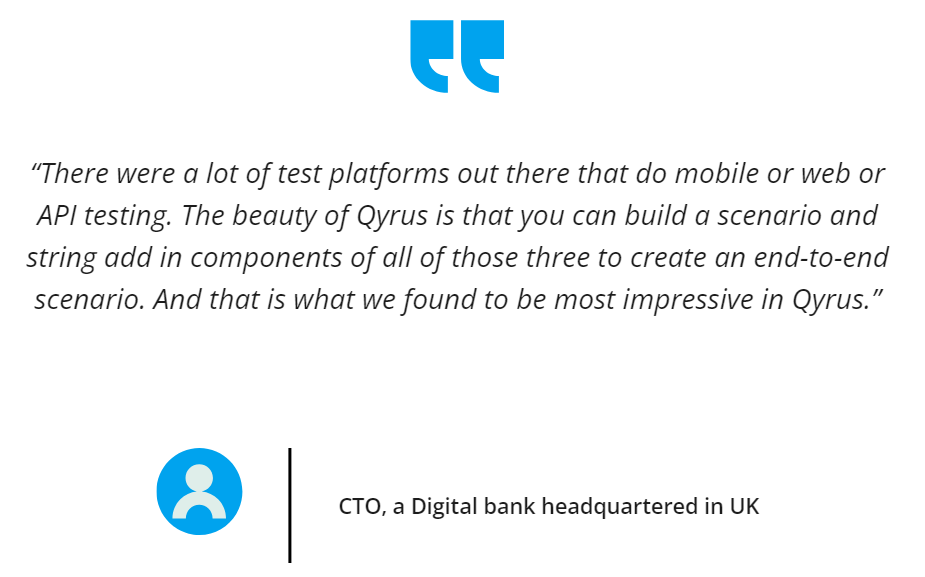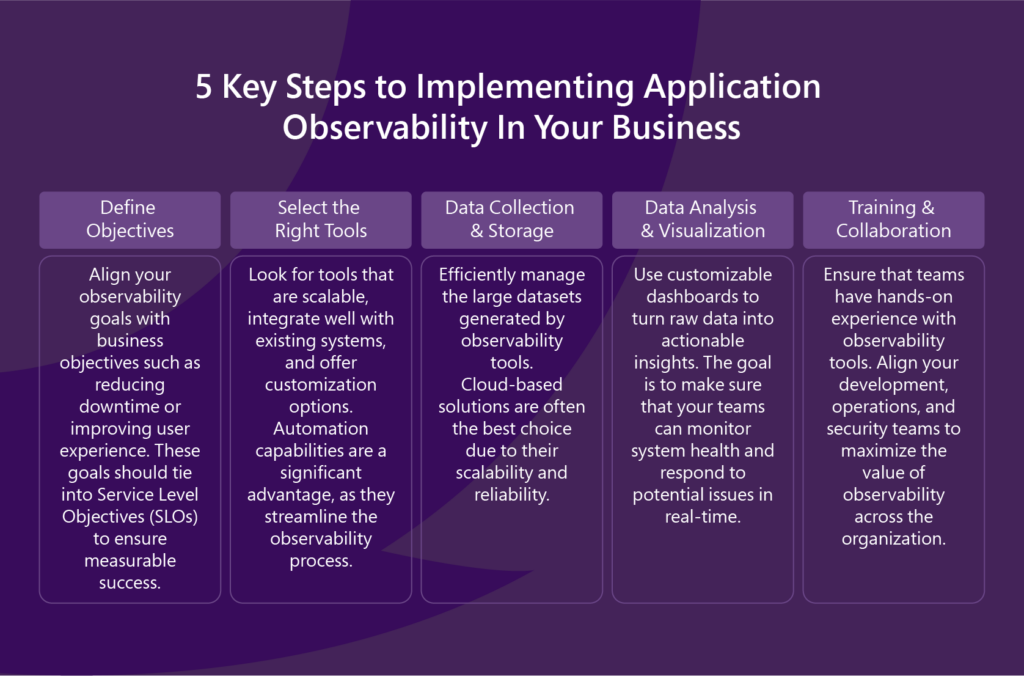Accelerate IT operations with AI-driven Automation
Automation in IT operations enable agility, resilience, and operational excellence, paving the way for organizations to adapt swiftly to changing environments, deliver superior services, and achieve sustainable success in today's dynamic digital landscape.
Driving Innovation with Next-gen Application Management
Next-generation application management fueled by AIOps is revolutionizing how organizations monitor performance, modernize applications, and manage the entire application lifecycle.
AI-powered Analytics: Transforming Data into Actionable Insights
AIOps and analytics foster a culture of continuous improvement by providing organizations with actionable intelligence to optimize workflows, enhance service quality, and align IT operations with business goals.
“Did you know? According to Adenza, the use of CATT can decrease test execution times by up to 70%”
As digital transformation continues to evolve, organizations are increasingly adopting cloud-native technologies like microservices, Kubernetes, and serverless functions to stay competitive. Yet, despite these advancements, a recent Gartner study revealed that 74% of enterprises are struggling to manage the growing complexity of their IT environments.
With tightening IT budgets and economic pressures, enterprises are realizing that traditional monitoring tools are insufficient to keep up with modern, complex systems. This shift is driving the demand for application observability, a crucial practice that not only reduces operational complexity but also helps organizations deliver seamless digital experiences. In fact, companies with effective observability practices report up to a 40% reduction in incident resolution times, which directly impacts their bottom line and customer satisfaction. The question now isn’t if you should adopt observability but how quickly you can implement it to stay ahead of the curve.
What is Application Observability?
Application observability enables teams to monitor the internal state of systems by analyzing the external outputs. Unlike traditional monitoring, which focuses solely on metrics and logs, observability provides a 360-degree view of the application’s health, enabling quicker identification and resolution of issues.

The Growing Importance of Observability
According to IDC, downtime costs enterprises an average of $100,000 per hour, with the real impact often being even higher when reputational damage is considered. Application observability plays a pivotal role in preventing downtime and enhancing business operations by offering the following benefits:
- Real-time insights: Provides immediate visibility into system performance, enabling faster decision-making.
- Increased collaboration: Breaks down silos between IT and business teams, aligning them toward common goals.
- Business value: By correlating system performance with business outcomes, observability enables leaders to make more informed, data-driven decisions.
Key Components of a Robust Observability Strategy
A well-rounded observability strategy should focus on more than just availability and performance metrics. To stay competitive in today’s market, organizations must also consider security and business outcomes. Here are the critical components:
- Speed of Deployment: Observability tools should be easy to implement and adaptable to changing environments.
- Unified Platform: A single source of truth for performance, availability, and security data helps streamline operations and enhances decision-making.
- Real-Time Business Insights: Dashboards that provide real-time data on business transactions can help organizations measure the impact of innovation and optimize resources.

Flexibility in Observability Solutions: Balancing Cloud-Native and Legacy Systems
As organizations adopt a hybrid model—balancing cloud-native and on-premises environments—flexibility becomes a key consideration for observability solutions. These tools must seamlessly integrate with both modern cloud applications and legacy systems to provide a unified, comprehensive view of the IT landscape.
A Forrester report highlighted that companies using hybrid observability solutions reported a 32% improvement in their ability to manage both cloud and legacy environments effectively. This flexibility is especially important in today’s economic climate, where budgets are tight, and ROI is critical.
5 Key Steps to Implementing Application Observability In Your Business
Implementing an observability solution isn’t a one-size-fits-all process. Here’s a structured approach to guide your implementation:
Understanding the Total Economic Impact™ Study

Key Findings from the TEI of Qyrus Study: A Closer Look
The Business Impact of Application Observability
Application observability does more than just improve technical performance; it also drives substantial business outcomes. Here are the top ways observability impacts business:
- Reduced Downtime: With real-time monitoring and alerting, teams can identify and address issues before they escalate, saving millions in potential downtime costs.
- Enhanced User Experience: By quickly identifying performance bottlenecks, observability ensures that users have a seamless experience across all digital touchpoints.
- Informed Decision-Making: Access to detailed operational data enables business leaders to make strategic decisions based on hard data, not assumptions.

The Strategic Advantage of Qyrus
Qyrus exemplifies how an advanced testing platform can transform an organization’s approach to software development. The TEI report on Qyrus highlighted several areas of impact:
- Facilitating Growth and Innovation: By optimizing testing processes, Qyrus frees up resources that can be redirected towards innovation. This is crucial for organizations looking to stay competitive and capitalize on new opportunities. The ability to quickly and efficiently bring new features to market allows businesses to respond to customer needs and industry trends, driving growth and long-term success.
- Improved Business Growth and Market Response: Qyrus contributes to broader business objectives, particularly in terms of growth and market agility. Faster time-to-market capabilities allow organizations to be more responsive to market trends and customer feedback, providing a significant competitive advantage. Consistently delivering high-quality products and responding swiftly to customer needs enhances customer satisfaction and loyalty, driving revenue growth and opening new revenue streams.
Wrap -Up
As technology evolves and customer demands grow, businesses that prioritize observability will reduce operational costs, enhance the customer experience, and drive long-term growth. Incorporating observability into your core business strategy positions your organization to stay ahead of the competition, ensuring resilience, agility, and innovation in a rapidly changing world.
Quinnox, through its intelligent application management platform Qinfinite, provides a robust observability solution that integrates seamlessly across cloud-native and on-premises environments. Qinfinite enhances real-time insights, promotes faster issue resolution, and supports businesses in achieving operational excellence at scale.
Are you ready to future-proof your business? Discover how Qinfinite can help you achieve operational excellence and deliver exceptional digital experiences. Request a free demo here
Connect with Us Today!

